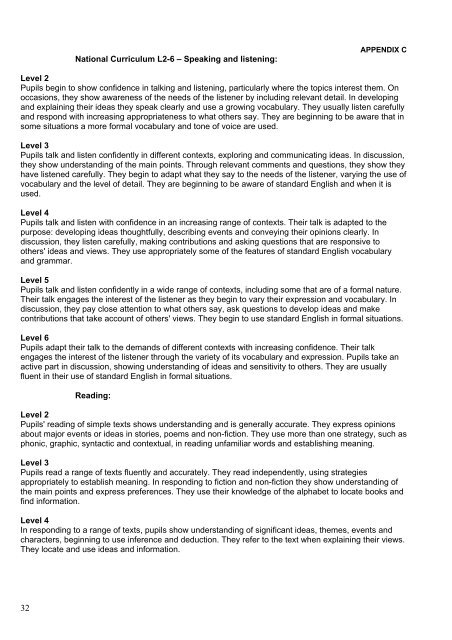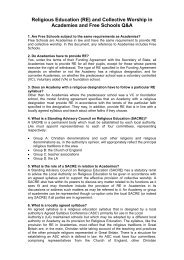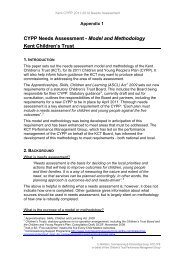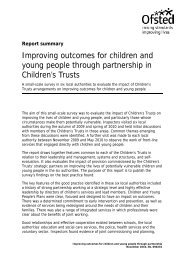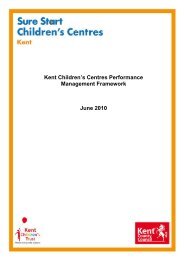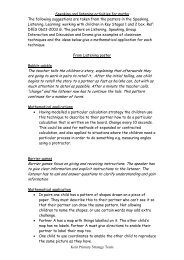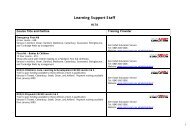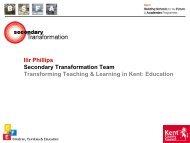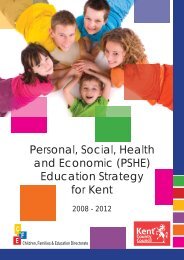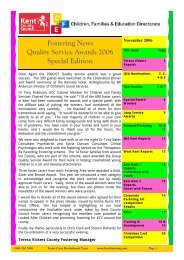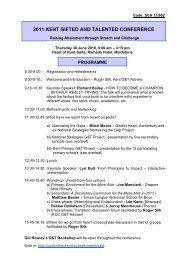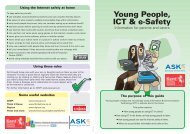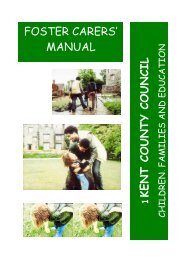Key Stage 1 - Kent Trust Web
Key Stage 1 - Kent Trust Web
Key Stage 1 - Kent Trust Web
Create successful ePaper yourself
Turn your PDF publications into a flip-book with our unique Google optimized e-Paper software.
National Curriculum L2-6 – Speaking and listening:<br />
APPENDIX C<br />
Level 2<br />
Pupils begin to show confidence in talking and listening, particularly where the topics interest them. On<br />
occasions, they show awareness of the needs of the listener by including relevant detail. In developing<br />
and explaining their ideas they speak clearly and use a growing vocabulary. They usually listen carefully<br />
and respond with increasing appropriateness to what others say. They are beginning to be aware that in<br />
some situations a more formal vocabulary and tone of voice are used.<br />
Level 3<br />
Pupils talk and listen confidently in different contexts, exploring and communicating ideas. In discussion,<br />
they show understanding of the main points. Through relevant comments and questions, they show they<br />
have listened carefully. They begin to adapt what they say to the needs of the listener, varying the use of<br />
vocabulary and the level of detail. They are beginning to be aware of standard English and when it is<br />
used.<br />
Level 4<br />
Pupils talk and listen with confidence in an increasing range of contexts. Their talk is adapted to the<br />
purpose: developing ideas thoughtfully, describing events and conveying their opinions clearly. In<br />
discussion, they listen carefully, making contributions and asking questions that are responsive to<br />
others' ideas and views. They use appropriately some of the features of standard English vocabulary<br />
and grammar.<br />
Level 5<br />
Pupils talk and listen confidently in a wide range of contexts, including some that are of a formal nature.<br />
Their talk engages the interest of the listener as they begin to vary their expression and vocabulary. In<br />
discussion, they pay close attention to what others say, ask questions to develop ideas and make<br />
contributions that take account of others' views. They begin to use standard English in formal situations.<br />
Level 6<br />
Pupils adapt their talk to the demands of different contexts with increasing confidence. Their talk<br />
engages the interest of the listener through the variety of its vocabulary and expression. Pupils take an<br />
active part in discussion, showing understanding of ideas and sensitivity to others. They are usually<br />
fluent in their use of standard English in formal situations.<br />
Reading:<br />
Level 2<br />
Pupils' reading of simple texts shows understanding and is generally accurate. They express opinions<br />
about major events or ideas in stories, poems and non-fiction. They use more than one strategy, such as<br />
phonic, graphic, syntactic and contextual, in reading unfamiliar words and establishing meaning.<br />
Level 3<br />
Pupils read a range of texts fluently and accurately. They read independently, using strategies<br />
appropriately to establish meaning. In responding to fiction and non-fiction they show understanding of<br />
the main points and express preferences. They use their knowledge of the alphabet to locate books and<br />
find information.<br />
Level 4<br />
In responding to a range of texts, pupils show understanding of significant ideas, themes, events and<br />
characters, beginning to use inference and deduction. They refer to the text when explaining their views.<br />
They locate and use ideas and information.<br />
32


